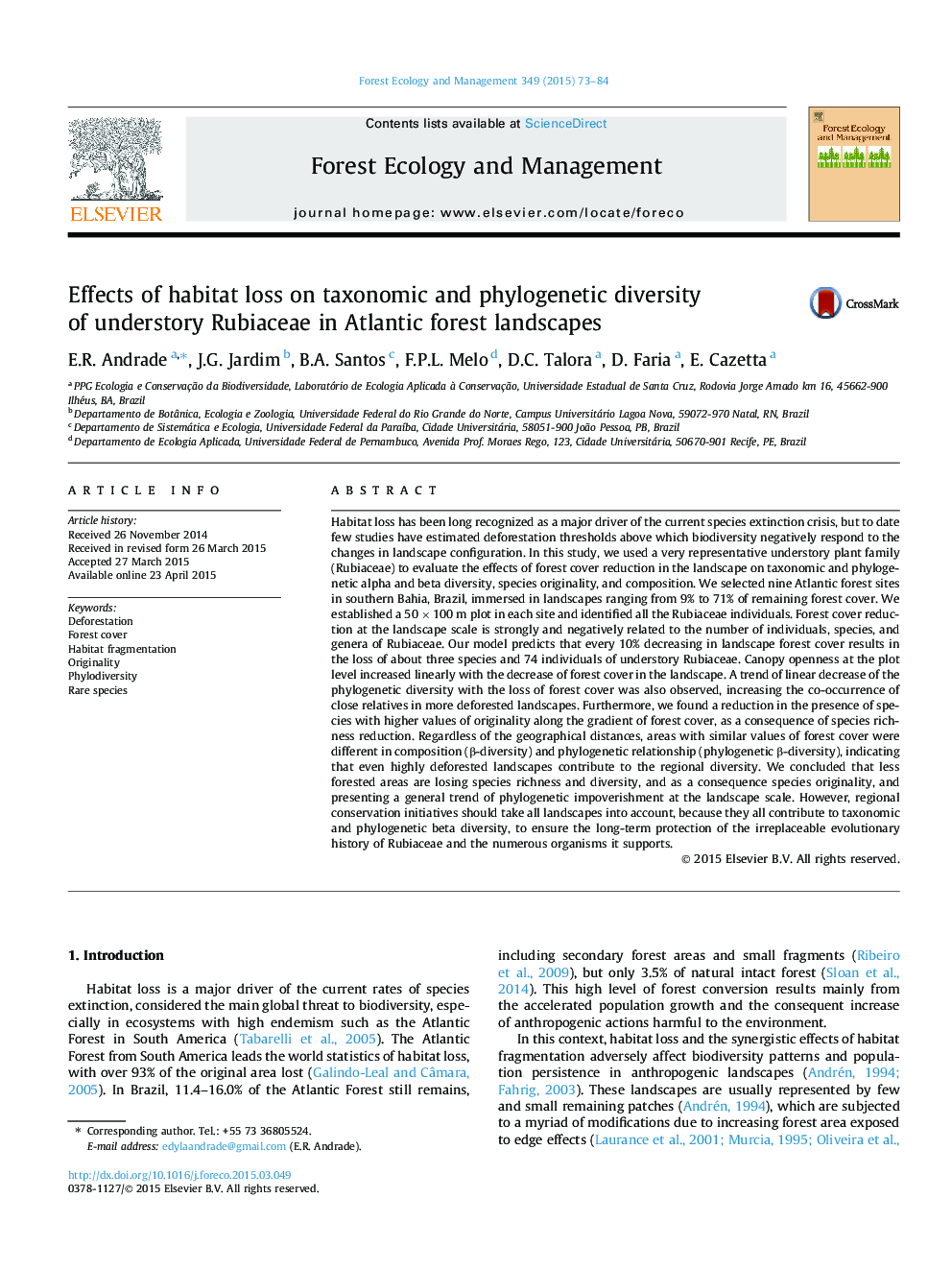| کد مقاله | کد نشریه | سال انتشار | مقاله انگلیسی | نسخه تمام متن |
|---|---|---|---|---|
| 86273 | 159175 | 2015 | 12 صفحه PDF | دانلود رایگان |
• Habitat loss negatively affects Rubiaceae taxonomic and phylogenetic diversity.
• The co-occurrence of close related species increase in more deforested landscapes.
• The number of original species also reduces in more deforested landscapes.
• A higher β-diversity and phylogenetic β-diversity was found in deforested landscapes.
Habitat loss has been long recognized as a major driver of the current species extinction crisis, but to date few studies have estimated deforestation thresholds above which biodiversity negatively respond to the changes in landscape configuration. In this study, we used a very representative understory plant family (Rubiaceae) to evaluate the effects of forest cover reduction in the landscape on taxonomic and phylogenetic alpha and beta diversity, species originality, and composition. We selected nine Atlantic forest sites in southern Bahia, Brazil, immersed in landscapes ranging from 9% to 71% of remaining forest cover. We established a 50 × 100 m plot in each site and identified all the Rubiaceae individuals. Forest cover reduction at the landscape scale is strongly and negatively related to the number of individuals, species, and genera of Rubiaceae. Our model predicts that every 10% decreasing in landscape forest cover results in the loss of about three species and 74 individuals of understory Rubiaceae. Canopy openness at the plot level increased linearly with the decrease of forest cover in the landscape. A trend of linear decrease of the phylogenetic diversity with the loss of forest cover was also observed, increasing the co-occurrence of close relatives in more deforested landscapes. Furthermore, we found a reduction in the presence of species with higher values of originality along the gradient of forest cover, as a consequence of species richness reduction. Regardless of the geographical distances, areas with similar values of forest cover were different in composition (β-diversity) and phylogenetic relationship (phylogenetic β-diversity), indicating that even highly deforested landscapes contribute to the regional diversity. We concluded that less forested areas are losing species richness and diversity, and as a consequence species originality, and presenting a general trend of phylogenetic impoverishment at the landscape scale. However, regional conservation initiatives should take all landscapes into account, because they all contribute to taxonomic and phylogenetic beta diversity, to ensure the long-term protection of the irreplaceable evolutionary history of Rubiaceae and the numerous organisms it supports.
Journal: Forest Ecology and Management - Volume 349, 1 August 2015, Pages 73–84
